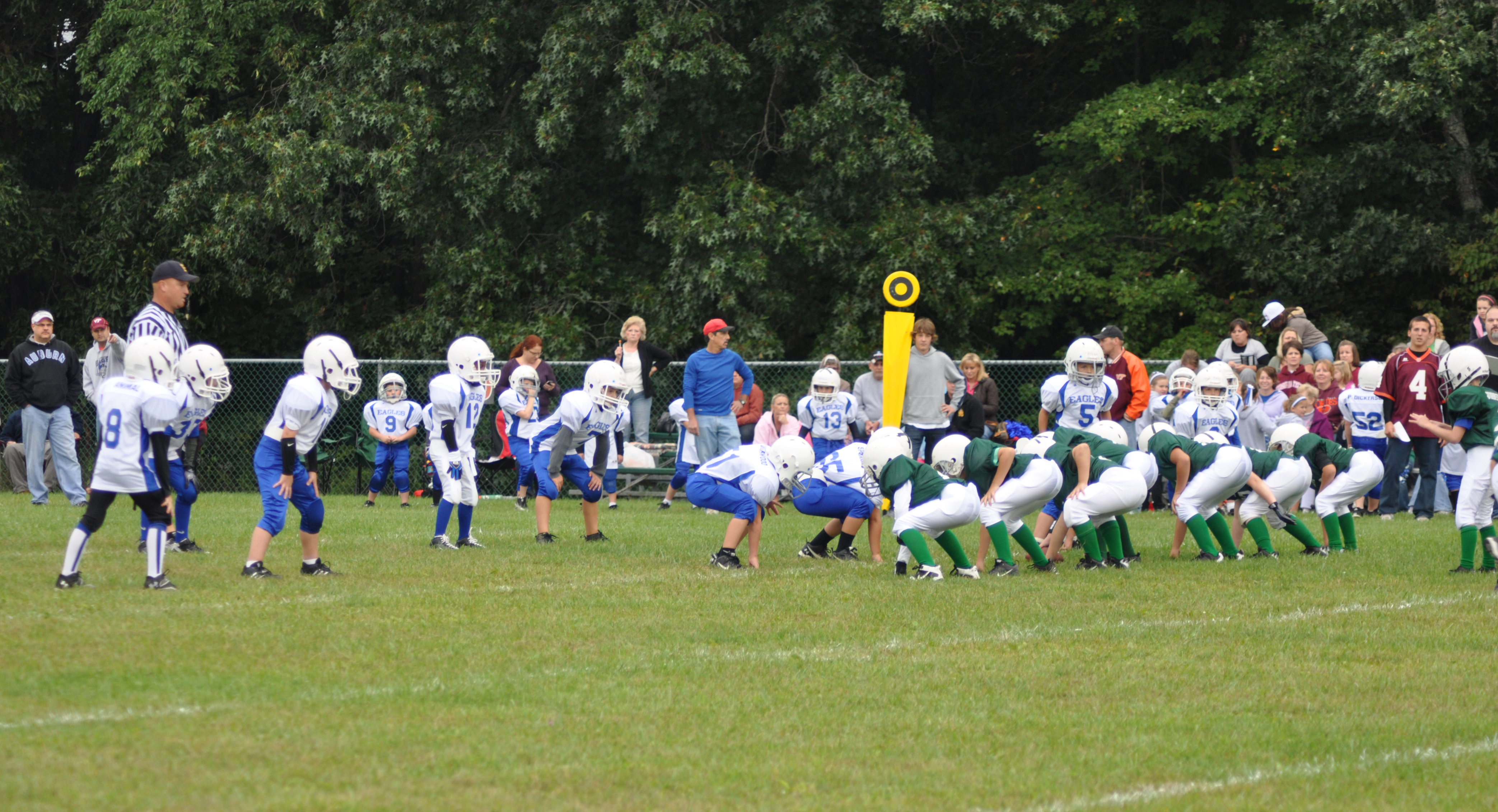Virginia Tech biomedical engineers announce child football helmet study

Virginia Tech released today results from the first study ever to instrument child football helmets. Youth football helmets are currently designed to the same standards as adult helmets, even though little is known about how child football players impact their heads. This is the first study to investigate the head impact characteristics in youth football, and will greatly enhance the development of improved helmets specifically designed for children.
The Auburn Eagles, a local, Montgomery County, Va., youth team consisting of 6- to 8-year-old boys, has participated in the study since August. The helmets of the child football players are instrumented with custom 12 accelerometer arrays that measure how a child’s head responds to impact. Each time a player impacts his head, data is recorded and wirelessly downloaded to a computer on the sideline.
The technology is similar to what Virginia Tech has used since 2003 to instrument its collegiate football team. “The research conducted with the Virginia Tech football team has led to a better understanding of head impacts in football and how they relate to concussions,” said Stefan Duma, the Virginia Tech professor of biomedical engineering and department head of the Virginia Tech – Wake Forest University School of Biomedical Engineering and Sciences that directs this project.
Furthermore, this research has led to the development of the National Impact Database, which contains the first safety rating system ever available for adult football helmets (STAR Evaluation System). Similar developments for youth football are anticipated from the current study with the Auburn Eagles.
“Based on eight years of studying head impacts experienced by Virginia Tech football players, we were able to quantify exposure for adult football players relative to impact location, severity, and frequency,” Duma said. “Unfortunately, we cannot translate the adult exposure to the youth helmets because the impact conditions of youth football are completely unknown. To solve this problem, we are applying the same approach that we have used with the Virginia Tech football team to a youth football team,” Duma added.
The instrumentation wasn’t compatible with the older helmets that were initially provided for the youth team, so Virginia Tech purchased new helmets for the entire team. “The kids are very excited about wearing the same technology in their helmets that the Virginia Tech football team has worn over the last eight years,” said Ray Daniel, the graduate student whose master’s thesis will be focused on the study.
“The parents, kids, and coaches have been very cooperative and are all excited about being part of this important study that will lead to better design guides for youth football helmets,” added Daniel, who performs the daily duties for the study and who is at every practice and game. All players and parents have consented to the study in accordance with the Virginia Tech Institutional Review Board procedures.
To date, over 400 head impacts experienced by the youth football team have been collected and analyzed. “Not only are the impacts generally less severe in youth football when compared to adults, but the frequency of the most severe impacts is substantially lower,” Duma said. While most of the impacts collected have been of very low severity; surprisingly, a few impacts are approaching impact levels associated with concussion in adult football players. The goal of this study is to completely quantify and characterize the head impact conditions of youth football, which will provide guidelines to aide manufacturers in designing better helmets for children.
“We have a unique opportunity to quantify the distribution of head impacts experienced by youth players, which no one has ever looked at before,” said Steven Rowson, research assistant professor of biomedical engineering and creator of the STAR Evaluation System for football helmets. Rowson, who also helped design the sensors that are currently in the youth helmets, added, “By knowing these impact distributions, we can develop a safety rating system for youth football helmets that will supplement the National Impact Database. This not only educates consumers on relative helmet safety, but also provides improved design criteria for helmet manufacturers.”
This work has implications that are not limited to improved helmets in football, but also has applications towards improved head protection in other sports, as well as advancements in automobile safety designs. Funding for this project is provided by the National Highway Traffic Safety Administration and the Institute for Critical Technology and Applied Science at Virginia Tech.




